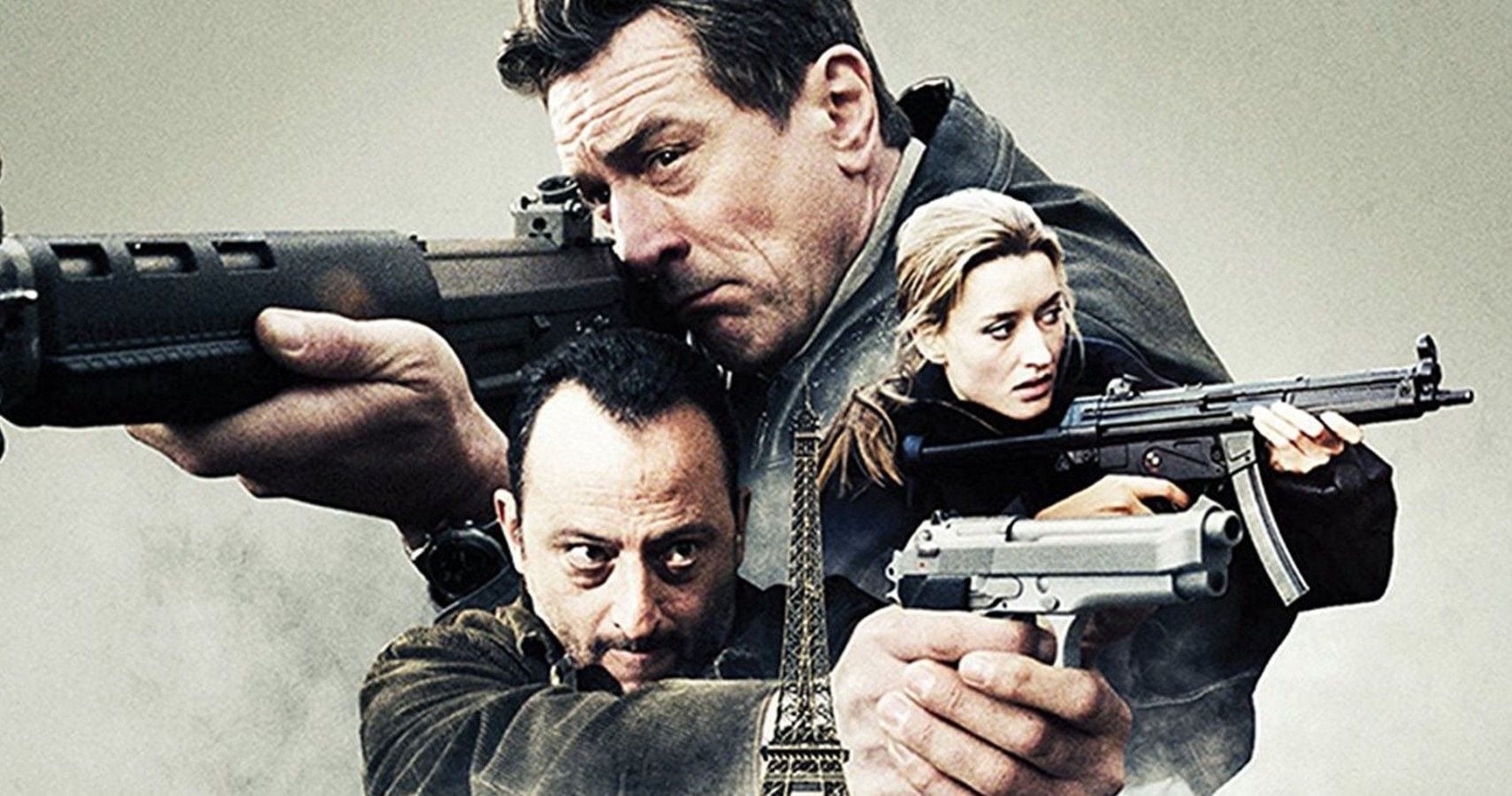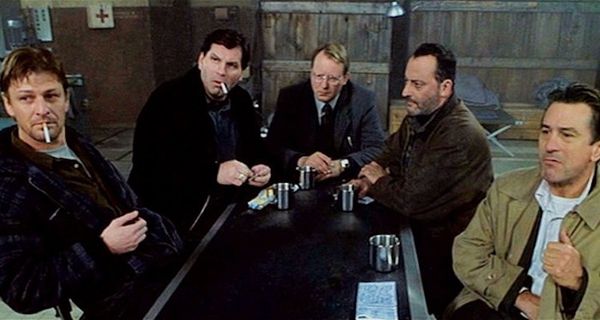With a cast like Robert DeNiro (Sam), Stellan Skarsgård (Gregor), Sean Bean (Spence), Jean Reno (Vincent), and Natascha McElhone (Deirdre) to its credit alone, it hurts to know that the Feature Film Ronin somehow got lost in the shuffle. A great cast does not necessarily make a great film, but in Ronin's case, it is one of the many merits of a melancholic caper that was sharp, to begin with, and has only gotten better with age.

Source: Metro-Goldwyn-Mayer Studios inc. (Blu ray, 2017 Arrow Films)
Released the same year as Armageddon and Deep Impact, American's at the time were busy wondering which anti-asteroid plan was the better one, instead of asking the real pressing question: "what's in the silver case?". Suffice it to say the world may never know. Such is the McGuffin, the unexplained object of desire that outlives a story by virtue of its mystery.
John Frankenheimer's tail-end of cold-war era espionage thriller Ronin assembles a crack team of ex-government agents and ex-military operatives hired by Deirdre (Natascha McElhone) and Seamus (Jonathan Pryce). These two rogues of the Irish Republican Army are responsible for retrieving a silver briefcase from its French handlers. Mikhi (Feodor Atkine) and the Russian Mafia also have crosshairs on the precious case, setting the stage for an international melee of shifting loyalties and rivalries.
Ronin is a head above the rest in terms of sheer craft, tone, and tension in navigating that melee in a coherent way that maximizes a clean aesthetic without sacrificing character.
Ahead of the Curve
Released in 1998, audiences couldn't quite appreciate what was being done or how well it was being done with the Feature Film Ronin because the dial had been slowly turned up on their expectations and their tastes by the likes of Jerry Bruckheimer, Roland Emmerich, Michael Bay, and company. Comparatively, the cool-toned classically inflected Ronin looks as fresh and as calibrated today as it did then, while its peers suffer the swift aging of digital effects.
The result of J. D. Zeik and David Mamet's screenplay, Ronin's storytelling is primarily done visually with impeccable camera placement. However, the actual depth of the film is created through our impressions of the players, each wearing their own mask or masks. Frankenheimer's crack team may be experts, but circumstances limit the extent to which they can execute any kind of grand strategy in a satisfying and rare way.

Source: Metro-Goldwyn-Mayer Studios inc. (Blu ray, 2017 Arrow Films)
Their tactics emerge from their instincts, and what they are capable of individually and as a team is based on personal histories, which we only glimpse through those instincts. A great degree of improvisation and latitude is baked into Deirdre's spontaneous and reactive heist plan that goes awry to various degrees at different stages, drawing out the scenario far beyond its initial scope but not beyond its aim: the silver case. The point is that Frankenheimer gives us characters and not caricatures, so there is something to hold on to when the bullets and double-crosses start flying.
The Fast Lane
The car chases in Ronin, now aged 23 years, are still ones for the history books because they are entirely practical stunts, filmed and choreographed without digital manipulation or a single lens flare. Cinematographer Fraisse and Director Frankenheimer's fundamental decisions regarding the camera mountings, lenses, and frame rates have a significant impact on how we experience the intensity, hazard, speed, and savvy of these chases through narrow French streets.
These decisions also keep the Feature Film Ronin looking fresh despite aesthetic shifts in the cinematic landscape. Frankenheimer being no stranger to filming car sequences, with French Connection II and Grand Prix to his credit, was the supervising director for all the chases, something often given to a second unit director; thus, his stamp is on the entirety of the film. Again the skill level is high amongst these drivers, but it isn't so high that we have to uncomfortably suspend disbelief.
Looking Better than Ever
Arrow Video's blu blu ray Special Edition, struck from a 4K scan of the original 35mm camera negative, reveals every brilliant dimension. That of John Fraisse's silvery wide-angle cinematography, Gerard Viards's muted palate Art Direction, May Routh's understated costume design, Elia Cmiral's old school Hollywood score, and Jean-Cleaude Lagniez's car stunt choreography.
Shot almost entirely on location in Nice and Paris, France, Ronin stands as a kind of pristine artifact: a Euro location-based action thriller with all of its action and thrills executed in-camera. That alone makes this edition from Arrow all the more a celebration of craft.
A Surprising Aspect
If the silver-toned 35mm cinematography alone doesn't sing to you, the rapport between Vincent and Sam, which gives us the low-key dream team of DeNiro and Reno we never expected, certainly will. In fact, their relationship under the dire circumstances of this ever complicating job is the arguable but still understated "heart" of a largely callous or bluntly violent film.
Even if the tension of the battle for this invaluable briefcase wears off (it doesn't, and in any case, it isn't even about the case), this old guard honor-amongst-thieves kind of professionalism between Sam and Vincent alone makes one hope that they cross paths once again. It would be a shame if they didn't.
